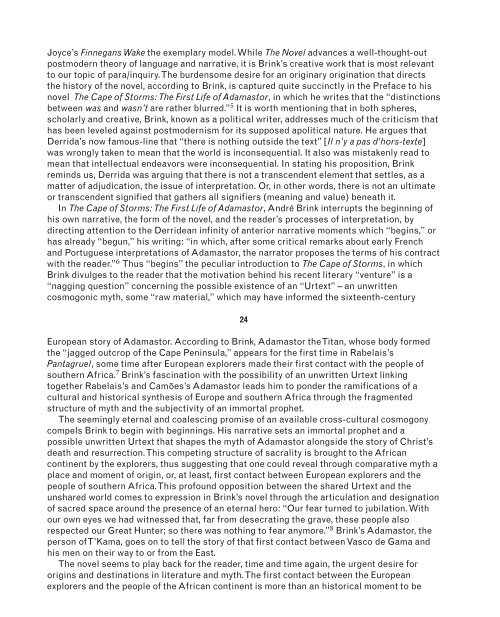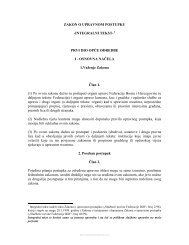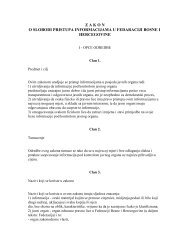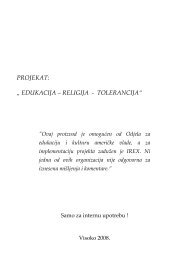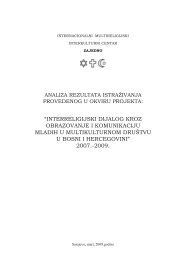always flat <strong>and</strong> literature is not always mimetic, philosophical inquiry, too, occasionallydisobeys the hard rules of the discipline, namely the syllogism.In all his works, Carroll examines the differences between events, things, <strong>and</strong> states of affairs.But the entire first half of Alice still seeks the secret of the events <strong>and</strong> of the becoming unlimitedwhich they imply, in the depths of the earth, in dug out shafts <strong>and</strong> holes which plungebeneath, <strong>and</strong> in the mixture of bodies which interpenetrate <strong>and</strong> coexist. 3Gilles Deleuze’s reading of Carroll, clearly showing an indebtedness to Nietzsche’s critiqueof philosophy, describes the ways in which depth gives way to surface. Ordinarily, if onefollows Deleuze’s practice of reading, a literary <strong>and</strong> philosophical text usually has a surface<strong>and</strong> depth; the depth is where meaning allegedly resides. Alice’s movement below thesurface, into the underground of language, does not, for Deleuze, necessarily place her in theproximity of meaning. It is, he argues, the opposite. As Alice moves deeper, meaning becomesless available. It is on this point that Deleuze introduces the concept of laterality, whichspeaks to the location of meaning in the age of postmodernism. One does not move into thedepths of meaning; one moves across meanings: “Events are like crystals, they become <strong>and</strong>grow only out of the edges, or on the edge.” 4LITERARY AND POLITICAL SURFACESWhile Deleuzean “laterality” seems appropriate to a discussion of the aesthetic dimension of23the literary text, what does it mean for the ever-present political dimension of the literarytext? Does Deleuzean “laterality” simply cast off politics, leaving it aside as anunaddressable sphere? One can, I will argue, carry Deleuzean “laterality” into the present tomore fully elaborate the politics–aesthetics of reading. Approaching the Deleuzean“revolutionary character” of texts is no small matter in postmodernism. The generic criticismof postmodernism, poststructuralism, <strong>and</strong> deconstruction has been that each <strong>and</strong> all mountassaults upon reality resulting in a dismissal of “politics.” Only the first part of the criticism, Ibelieve, has value. <strong>Postmodern</strong>ism, poststructuralism, <strong>and</strong> deconstruction do, in fact, assaultthe concept of reality from differing philosophical directions. One can say with a certaindegree of accuracy that these discourses do indeed combine to problematize theepistemological <strong>and</strong> linguistic character of the reality upon which any politics is based. Thisdoes not mean that postmodernism, poststructuralism, <strong>and</strong> deconstruction are necessarilyantipolitical or apolitical. Rather, these discourses recast the conceptualizations of “reality”<strong>and</strong> “politics.” The consequences for politics remain to be seen.LATERALIZING POLITICAL LITERATUREIn his recent scholarly endeavor, aptly entitled The Novel, André Brink reconsiders the historyof the genre by taking into account the perspective, dominant from “Cézanne onwards,” that“the medium is the message,” which is to say that language is central in the construction, notthe representation, of reality. At times tempted to make the claim that all novels arepostmodern, Brink investigates the notion of the “primacy of language as language,” with
Joyce’s Finnegans Wake the exemplary model. While The Novel advances a well-thought-outpostmodern theory of language <strong>and</strong> narrative, it is Brink’s creative work that is most relevantto our topic of para/inquiry. The burdensome desire for an originary origination that directsthe history of the novel, according to Brink, is captured quite succinctly in the Preface to hisnovel The Cape of Storms: The First Life of Adamastor, in which he writes that the “distinctionsbetween was <strong>and</strong> wasn’t are rather blurred.” 5 It is worth mentioning that in both spheres,scholarly <strong>and</strong> creative, Brink, known as a political writer, addresses much of the criticism thathas been leveled against postmodernism for its supposed apolitical nature. He argues thatDerrida’s now famous-line that “there is nothing outside the text” [Il n’y a pas d’hors-texte]was wrongly taken to mean that the world is inconsequential. It also was mistakenly read tomean that intellectual endeavors were inconsequential. In stating his proposition, Brinkreminds us, Derrida was arguing that there is not a transcendent element that settles, as amatter of adjudication, the issue of interpretation. Or, in other words, there is not an ultimateor transcendent signified that gathers all signifiers (meaning <strong>and</strong> value) beneath it.In The Cape of Storms: The First Life of Adamastor, André Brink interrupts the beginning ofhis own narrative, the form of the novel, <strong>and</strong> the reader’s processes of interpretation, bydirecting attention to the Derridean infinity of anterior narrative moments which “begins,” orhas already “begun,” his writing: “in which, after some critical remarks about early French<strong>and</strong> Portuguese interpretations of Adamastor, the narrator proposes the terms of his contractwith the reader.” 6 Thus “begins” the peculiar introduction to The Cape of Storms, in whichBrink divulges to the reader that the motivation behind his recent literary “venture” is a“nagging question” concerning the possible existence of an “Urtext” – an unwrittencosmogonic myth, some “raw material,” which may have informed the sixteenth-century24European story of Adamastor. According to Brink, Adamastor the Titan, whose body formedthe “jagged outcrop of the Cape Peninsula,” appears for the first time in Rabelais’sPantagruel, some time after European explorers made their first contact with the people ofsouthern Africa. 7 Brink’s fascination with the possibility of an unwritten Urtext linkingtogether Rabelais’s <strong>and</strong> Camões’s Adamastor leads him to ponder the ramifications of acultural <strong>and</strong> historical synthesis of Europe <strong>and</strong> southern Africa through the fragmentedstructure of myth <strong>and</strong> the subjectivity of an immortal prophet.The seemingly eternal <strong>and</strong> coalescing promise of an available cross-cultural cosmogonycompels Brink to begin with beginnings. His narrative sets an immortal prophet <strong>and</strong> apossible unwritten Urtext that shapes the myth of Adamastor alongside the story of Christ’sdeath <strong>and</strong> resurrection. This competing structure of sacrality is brought to the Africancontinent by the explorers, thus suggesting that one could reveal through comparative myth aplace <strong>and</strong> moment of origin, or, at least, first contact between European explorers <strong>and</strong> thepeople of southern Africa. This profound opposition between the shared Urtext <strong>and</strong> theunshared world comes to expression in Brink’s novel through the articulation <strong>and</strong> designationof sacred space around the presence of an eternal hero: “Our fear turned to jubilation. Withour own eyes we had witnessed that, far from desecrating the grave, these people alsorespected our Great Hunter; so there was nothing to fear anymore.” 8 Brink’s Adamastor, theperson of T’Kama, goes on to tell the story of that first contact between Vasco de Gama <strong>and</strong>his men on their way to or from the East.The novel seems to play back for the reader, time <strong>and</strong> time again, the urgent desire fororigins <strong>and</strong> destinations in literature <strong>and</strong> myth. The first contact between the Europeanexplorers <strong>and</strong> the people of the African continent is more than an historical moment to be
- Page 2: PARA/INQUIRY“For those of us who
- Page 5 and 6: First published 2000by Routledge11
- Page 8 and 9: CONTENTSList of figures ixAcknowled
- Page 10: FIGURES3.1 Questioner of the Sphinx
- Page 14: Posting
- Page 17 and 18: meaning that founds philosophical i
- Page 20: CHAPTER 1Paralogies
- Page 23 and 24: Lyotard’s enjeu, Deleuze and Guat
- Page 25 and 26: In his book Pararealities: The Natu
- Page 27 and 28: acquittal. The horror of the text i
- Page 29 and 30: writer therefore work without rules
- Page 32: CHAPTER 2Parastructures of the sacr
- Page 35: In this critical space opened by Ni
- Page 39 and 40: Deservedly confin’d into this roc
- Page 41 and 42: story of the sacred? Is there but o
- Page 44 and 45: The aspects of things that are most
- Page 46 and 47: AUTHENTICITYThe Sphinx has symboliz
- Page 48 and 49: The fact that I exist and have an i
- Page 50 and 51: connection with the Columbian Expos
- Page 52 and 53: through the sacred, so does the com
- Page 54 and 55: appropriation of his thought and of
- Page 56 and 57: use or civil meaning of the word (t
- Page 58 and 59: does not mean that one is sidestepp
- Page 60: of the twentieth century. As Lyotar
- Page 64 and 65: The sacred of the archaic world was
- Page 66 and 67: possibility for an expression of ex
- Page 68 and 69: the actual frame of the panels, the
- Page 70 and 71: space of the painting, and, second,
- Page 72 and 73: much a part of scholarship today. A
- Page 74 and 75: not merely interesting footnotes to
- Page 76 and 77: many to see Eliade as a mystic who
- Page 78 and 79: phenomenology. Eliade’s arrival i
- Page 80 and 81: of the sacred as a child in Romania
- Page 82 and 83: discursive structure to relinquish
- Page 84 and 85: autonomy of the work of art. But ha
- Page 86:
CHAPTER 5Para Shoah
- Page 89 and 90:
Faurisson reveals that the Shoah is
- Page 91 and 92:
MEMORIES OF FORGETTINGCertainty is
- Page 93 and 94:
political. Each of these ground(ing
- Page 95 and 96:
totalizing discourses or a determin
- Page 97 and 98:
Kantian wound often move toward a q
- Page 99 and 100:
Secret fauna and flora which the re
- Page 102:
CHAPTER 6Parasacred ground(ing)s
- Page 105 and 106:
often exist outside (the pagus) the
- Page 107 and 108:
graveyard. The sacred disfigures,be
- Page 109 and 110:
death, which is another repetition
- Page 111 and 112:
able to choose from a range of poss
- Page 113 and 114:
eligious. Mary’s presence as a mi
- Page 115 and 116:
As one walks through a cemetery, ti
- Page 117 and 118:
104Figure 6.15b Clinging to the Cro
- Page 120 and 121:
To think not is to linger with a ne
- Page 122 and 123:
PARASACRED IMAGESNor does one need
- Page 124 and 125:
irreverent piety in so far as eachr
- Page 126:
CHAPTER 8EpilogueParaultimacy
- Page 129 and 130:
The steps, the corridor, to the plo
- Page 131 and 132:
GLOSSARYI should say that in so far
- Page 133 and 134:
The early writings of the French ph
- Page 135 and 136:
NOTESPOSTING1 Michel Montaigne, Apo
- Page 137 and 138:
metaphysical notion of effectivespa
- Page 139 and 140:
and probably goes back to helios.Ea
- Page 141 and 142:
“compensate” the rigidity of th
- Page 143 and 144:
GLOSSARY1 Peter A. Angeles writes(H
- Page 145 and 146:
Stanford: Stanford University Press
- Page 147 and 148:
Riverside Shakespeare edn, Boston:H
- Page 149 and 150:
Carroll, Lewis 23cemeteries 93, 101
- Page 151 and 152:
painting 58; laughter as epiphany 5
- Page 153 and 154:
“paraexperience” 83, 86; the po
- Page 155 and 156:
postmodernism: authenticity 33;ceme
- Page 157 and 158:
Thousand Plateaus, A (Gilles Deleuz


